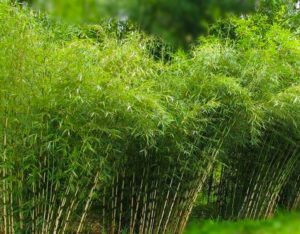5 Things to Know About The Bamboo Plant
 |
|
About Bamboo Adorning the perimeter of many commercial buildings, the willowy Bamboo stands, in containers and planter beds, providing screens and landscape focal points. Its reputation as a renewable resource for flooring to furniture and even fabric, make it emblematic of the sustainability movement. We maintain several sites in San Francisco with Bamboo plants and we appreciate their beauty, first-hand. They are finicky though, and need to be planted in just the right micro-climate. Because of its heightened interest we thought you might be interested to know more about them. Each Bamboo will have slightly different characteristics so in the interest of brevity we are providing general tips that apply to most Bamboo plants. |
|
Types of Bamboo There are numerous varieties of Bamboo. One clarification – Lucky Bamboo is actually not a Bamboo. It comes from the Dracaena family. Bamboo grows by spreading horizontally through “rhizomes”. Rhizomes are modified stems running underground horizontally. They represent a part of plant production and also store nutrients. Below to the right is a simple illustration that points out the main parts of a Bamboo plant: the Culm and Rhizome. |
 |
|
Clumping Bamboo One of the challenges of Bamboo is that it can be invasive. The benefit of Clumping Bamboo is that its rhizomes do not spread so rapidly. They are also slightly more drought tolerant. |
 The Parts of a Bamboo |
|
Running Bamboo They have long Rhizomes which enable them to spread rapidly. This type of Bamboo is considered invasive. |
|
|
The Best Environment for Most Bamboo
|
 Well Drained Soil |
|
What Stresses a Bamboo?
|
 Stressed Bamboo |
|
Planting Bamboo in Containers The larger container the better. One source suggests 18”x18” and 18” deep box is the smallest size container they recommend. Your container should be wider than it is tall. Potting soil dries out more quickly and it needs to be moist (not wet). Make sure your container has drainage so the plant is not sitting in water. |
|
|
About Bamboo Maintenance
|



thank you for giving me wonderful information